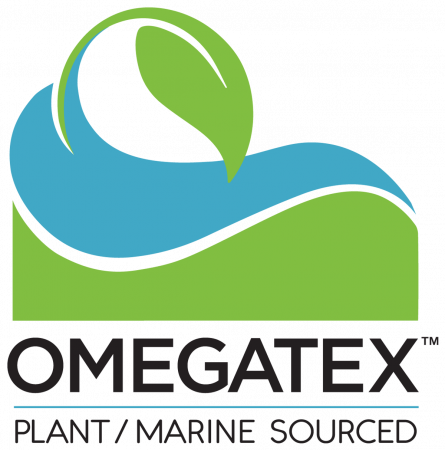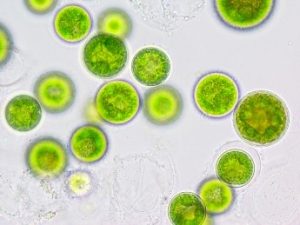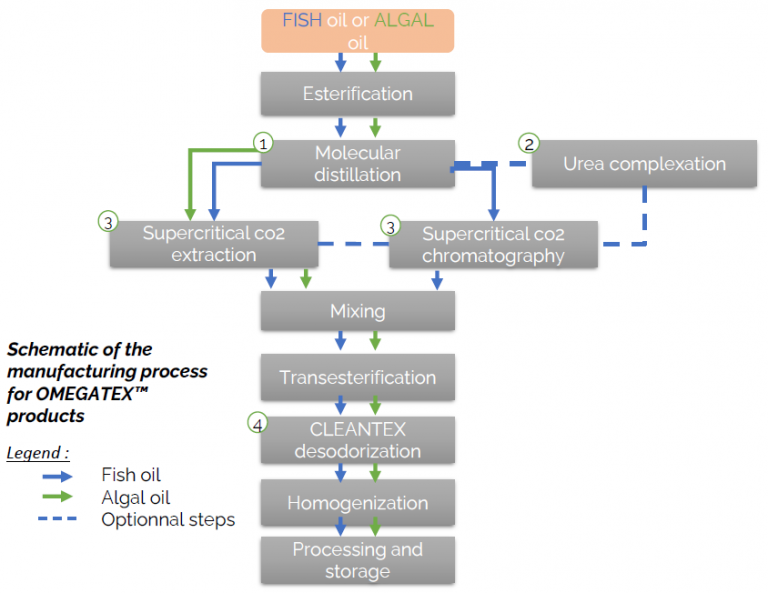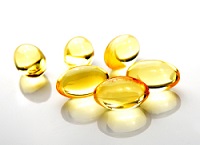
Omegatex® - ultra-concentrated EPA and DHA
Eye, cognitive and cardiovascular Health
Omegatex® is a range of marine-based oils highly concentrated in DHA and EPA omega-3 fatty acids, with concentrations reaching up to 80% and 90% respectively.
Its unique manufacturing process enables exceptional omega-3 concentrations to be achieved by completely separating EPA from DHA.
They are divided into two sub-ranges:
- Omegatex® fish, an odorless ingredient with high EPA and DHA content, derived from fish oil.
- Omegatex® algae, an ingredient derived from the microalgae Schizochytrium sp., with high DHA content and suitable for vegans.
The Omegatex® range includes several types of natural, stable, non-GMO and allergen-free oils, highly concentrated in EPA and DHA omega-3 fatty acids of animal (Omegatex® fish) and plant origin (Omegatex® algae).
Omegatex® fish

The Omegatex® fish range offers a variety of purified and concentrated oils outcome of semi-refined oils, extracted from the lipophilic tissues of oily and blue fish.
These oils are obtained thanks to the combination of several efficient techniques, such as low-temperature supercritical CO2 fluid extraction and the patented green CLEANTEX® technology. Their omega-3 content is up to 850 mg EPA/g of oil and 760 mg DHA/g of oil in triglyceride form (TG) but can reach 900 mg EPA/g of oil and 800 mg DHA/g of oil in ethyl ester form (EE).
Several references of the Omegatex® fish range are offered by Elementa.
Omegatex® algae
Omegatex® algae oils are “clean label” and 100% derived from the microalgae species Schizochytrium sp. cultivated in Europe. The DHA concentration in these oils can reach 750 mg/g of oil in triglycerides form (TG). The product range includes references with different DHA contents: 40%, 53%, 65%, 70% and 75%.
Just like fish, microalgae are also sources of omega-3 fatty acids, particularly DHA. Schizochytrium sp. is a unicellular microorganism naturally able to produce DHA without any genetic modification. Entirely non-animal, this raw material contains around 32% DHA and can be used for a vegan target.
particularly DHA. Schizochytrium sp. is a unicellular microorganism naturally able to produce DHA without any genetic modification. Entirely non-animal, this raw material contains around 32% DHA and can be used for a vegan target.
a. Eye health
b. Prenatal and child health
c. Cognitive health
d. Cardiovascular health
Omegatex® products are composed of ingredients that are sources of omega-3 docosahexaenoic (DHA) and eicosapentaenoic (EPA), mainly found in triglyceride form (TG).
Omega-3 DHA and EPA are fundamental components of cell membranes and also precursors of many metabolites. These two polyunsaturated fatty acids have the same precursor: alpha-linolenic acid (ALA). However, their biosynthesis is limited in the human body. For this reason, omega-3 polyunsaturated fatty acids such as DHA and EPA must be provided by diet or supplementation to meet the body’s needs.
The bioavailability of EPA and DHA omega-3 fatty acids is increased by 50% in TG form, compared with the ethanol-derived ethyl ester form (EE) (GISSI, 1999). Indeed, triglycerides appear to form an emulsion with the water in the stomach. This would then make possible the interaction between water-soluble enzymes and insoluble lipids, thus initiating the digestion process (Armand et al., 1996).
1. Nutritional benefits
Over time, our diets have gradually evolved and have become rich in saturated fats and poor in polyunsaturated fatty acids such as omega-3. According to an ANSES report from 2015, the segment of the French population aged from 18 to 34 years appears to present a deficit of more than 90% for cumulative EPA and DHA intakes. This deficit is comparable in children aged from 3 to 9 years (89%) but could reach 96% in 10-17 years old compared to the Dietary Reference Intakes (DRIs).
In order to meet the minimum physiological needs of the body and to avoid dietary deficiencies, a dose of 250 mg/day of DHA and EPA is recommended (ANSES, 2015). However, a daily consumption of 1 g of DHA and EPA is more appropriate in order to benefit from omega-3 virtues. The maximum intake limit for DHA and EPA is set by EFSA at 4 g/day.
2. Health benefits
Similar to their α-linolenic acid precursor (ALA), omega-3 EPA and DHA (such as those found in the Omegatex® range) are recognized by a large number of studies as having beneficial effects on:
a. Eye health
DHA is an important nutrient for retinal development and function. It would notably intervene in the function of rhodopsin, a receptor and photo-pigment located in the cells of the retina. Thanks to its ability to change its conformation, rhodopsin makes it possible to see in different lighting conditions (GOED, 2020).
 According to the AREDS 2* study report No. 20, omega-3 fatty-acid are associated with a slowing down of the progression of age-related macular degeneration (AMD). AMD is a disease characterized by a gradual loss in the central field of vision due to the degradation of a part of the retina called the macula (INSERM, 2020). This illness is the main cause of blindness in people older than 50. Thus, there may be a link between, on one hand, omega-3 intake and, on the other hand, impaired vision, damage to the retina and ocular diseases such as AMD.
According to the AREDS 2* study report No. 20, omega-3 fatty-acid are associated with a slowing down of the progression of age-related macular degeneration (AMD). AMD is a disease characterized by a gradual loss in the central field of vision due to the degradation of a part of the retina called the macula (INSERM, 2020). This illness is the main cause of blindness in people older than 50. Thus, there may be a link between, on one hand, omega-3 intake and, on the other hand, impaired vision, damage to the retina and ocular diseases such as AMD.
Two studies have demonstrated the beneficial effect of DHA intake in slowing down AMD. Among these, NATD2, a randomized, placebo-controlled, double-blind study on 300 people supplemented (840mg/day of DHA and 270mg/day of EPA) demonstrated a 68% decrease in the risk of developing neo-vascular AMD (Georgiou et al., 2015 ; Souied et al., 2015). At the same time, omega-3 supplementation would reduce the progression of the disease by reducing neo-vascular damage to the eyes (Sangiovanni et al., 2007).
Furthermore, a meta-analysis of 17 randomized clinical studies has shown that EPA and DHA omega-3 fatty acids can help decrease the symptoms of eye dryness that occur in Dry Eye Syndrome (DES) (Giannaccare et al., 2019). Another study showed that the intake of oils high in omega-3 fatty acids decreased symptoms in people with SSO, including regulation of osmolarity and increased tear stability (Deinema et al., 2017).
Omegatex® oils purified in DHA can thus be used to preserve eye health and prevent diseases such as AMD.
*Age-Related Eye Disease Study: American interventional studies recognized by the medical community and by researchers in ophthalmology.
b. Prenatal and child health
 Omega-3 fatty acids are necessary for retinal, brain and nerve development. For this reason, sufficient omega-3 intakes are essential for pregnant or lactating women and for infants and children. The ANSES opinion (2019) recommended a daily EPA and DHA intake of 500 mg for pregnant and lactating women.
Omega-3 fatty acids are necessary for retinal, brain and nerve development. For this reason, sufficient omega-3 intakes are essential for pregnant or lactating women and for infants and children. The ANSES opinion (2019) recommended a daily EPA and DHA intake of 500 mg for pregnant and lactating women.
A systematic review and meta-analysis of randomized studies showed a 58% reduction in early preterm births in women who received higher intakes of DHA and EPA omega-3 fatty acids (Kar et al., 2016). Moreover, a second meta-analysis showed that omega-3 intakes in the form of supplements or via the mother’s diet increased infant weight at birth (Middleton et al., 2018).
Supplementation with Omegatex® oils can therefore be suitable for the formulation of products for prenatal and infant health.
c. Cognitive health
Lipids represent more than 50% of the brain’s biomolecular composition, with DHA and EPA being the most abundant fatty acids. Several control studies have demonstrated the role of omega-3 in brain function and mental health in adults and during ageing. Various symptoms have been studied: cognitive function and memory (Dullemeijer et al., 2007; Freeman et al., 2006), depression symptoms (Hallahan et al., 2016) as well as the recovery from lesions after brain trauma (Lewis et al., 2013; Shober et al., 2016).
In addition, the results of an observational study carried out in 2020 on 1315 women aged 65-80 showed that DHA and EPA omega-3 fatty acids had a positive effect on brain ageing. This term refers to the decrease in the volume of white matter, a tissue that ensures information transmission in the nervous system. DHA and EPA omega-3 fatty acids are also believed to protect the brain against the unwanted effects of atmospheric pollution (Chen et al. 2020).
Thus, the DHA and EPA omega-3 fatty acids featured in Omegatex® oils would have a positive impact on cognitive health, particularly in senior citizens.
d. Cardiovascular health
Deaths due to cardiovascular diseases are numerous and may often be linked to an insufficient intake of omega-3 fatty acids. The results of 4 randomized and controlled trials on more than 4,000 participants showed the beneficial effects of omega-3 fatty acids supplementation, and in particular EPA, on cardiovascular health with a minimum intake of 500 mg/day (Lavie et al., 2005).
According to several meta-analyses on randomized controlled studies, EPA and DHA appear to reduce :
- The risk of cardiac-related deaths by 8% (Maki et al., 2017), and up to 10% in some studies.
- The risk of coronary disease* for 100mg/day of EPA and DHA (Engell et al., 2013)
- Systolic** and diastolic*** blood pressure, for an intake above 2g EPA and DHA (Miller et al., 2014).
The prospective, randomized, double-blind, placebo-controlled study REDUCE IT showed that purified EPA administered at a very high dose (4g/day) reduced the risk of cardiovascular death by 25%, including heart attack and stroke, for people with an established cardiovascular disease (Bhatt et al., 2018).
Thus, EPA and DHA omega-3 fatty acids featured in Omegatex® oils can be used in formulations for their benefits on cardiovascular health.
* Disease involving the arteries that lead to the heart.
** Maximum pressure exerted during the contraction phase of the left ventricle.
*** Residual pressure during the relaxation phase of the cardiac cycle.
Sources
- ANSES, 2015. Avis relatif aux « Apports en acides gras de la population vivant en France. Comparaison aux apports nutritionnels conseillés définis en 2010 » Rapport d’étude, Edition scientifique. [en ligne] https://www.anses.fr/fr/system/files/NUT2014sa0117Ra.pdf
- Armand M., Borel P., Pasquier B., Dubois C., Senft M., Andre M., Peyrot J., Salducci J., Lairon D. (1996). Physiological characteristics of emulsions during fat digestion in human stomach and duodenum. The American journal of physiology. 271. G172-83. 10.1152/ajpgi.1996.271.1.G172.
- Bhatt D.L., Steg P.G., Miller M. et al. (2018). on behalf of the REDUCE-IT Investigators. Cardiovascular risk reduction with icosapent ethyl in hypertriglyceridemia. N Engl J Med [Epub ahead of print].
- Chen C., Xun P., Kaufman J.D., Hayden K.M., Espeland M.A., Whitsel E.A., Serre M.L., Vizuete W., Orchard T., Harris W.S., Wang X., Chui H.C., Chen J.-C., He K. (2020). Erythrocyte omega-3 index, ambient fine particle exposure and brain aging. Neurology https://doi.org/10.1212/WNL.0000000000010074
- Deinema L.A., Vingrys A.J., Wong C.Y. et al. (2017). A randomized, double-masked, placebo-controlled clinical trial of two forms of omega-3 supplements for treating dry eye disease. Ophthalmology, 124:43-52 https://www.ncbi.nlm.nih.gov/pubmed/27817918
- Dullemeijer C., Durga J., Brouwer I.A. et al. (2007). n-3 fatty acid proportions in plasma and cognitive performance in older adults. Am J Clin Nutr, 86:1479-85. https://www.ncbi.nlm.nih.gov/pubmed/17991662
- Engell R.E., Sanman E., Lim S.S., Mozaffarian D. (2013). Seafood omega-3 intake and risk of coronary heart disease death: an updated meta-analysis with implications for attributable burden. The Lancet, 381, S45. https://doi.org/10.1016/S0140-6736(13)61299-4
- Freeman M.P., Hibbeln J.R., Wisner K.L. et al. (2006). Omega-3 fatty acids: evidence basis for treatment and future research in psychiatry. J Clin Psychiatry, 67:1954-67.
- Georgiou T., Prokopiou E. (2015). The new era of omega-3 fatty acids supplementation: therapeutic effects on dry age-related macular degeneration. J Stem Cells, 10:205-15. https://www.ncbi.nlm.nih.gov/pubmed/27125064
- Giannaccare G., Pellegrini M., Sebastiani S. et al. (2019). Efficacy of Omega-3 Fatty Acid Supplementation for Treatment of Dry Eye Disease: A Meta-Analysis of Randomized Clinical Trials. Cornea. 38:565-73. https://www.ncbi.nlm.nih.gov/pubmed/30702470
- GOED, Omega-3 Fatty Acids in Human Health Heart Health: The Role of Alpha-Linolenic, Eicosapentaenoic & Docosahexaenoic Acids. [en ligne] https://goedomega3.com/white-papers. Consulté le 01/09/2020
- Grupo Italiano per la Studio della Sopravvivenza nell’Infarto miocardico (GISSI) (1999). Dietary supplementation with n-3 polyunsaturated fatty acids and vitamin E after myocardial infarction : results of the GISSI-Prevenzione trial. Lancet 354 (9177): 447-455.
- Hallahan B., Ryan T., Hibbeln J.R. et al. (2016). Efficacy of omega-3 highly unsaturated fatty acids in the treatment of depression. Br J Psychiatry. 209:192-201. https://www.ncbi.nlm.nih.gov/pubmed/27103682
- Inserm – La science pour la santé. Dégénérescence maculaire liée à l’âge (DMLA) [en ligne], https://www.inserm.fr/information-en-sante/dossiers-information/degenerescence-maculaire-liee-age-dmla (Consulté le 18.08.20).
- Kar S., Wong M., Rogozinska E., Thangaratinam S. (2016). Effects of omega-3 fatty acids in prevention of early preterm delivery: a systematic review and meta-analysis of randomized studies. European journal of obstetrics, gynecology, and reproductive biology, 198, 40–46. https://doi.org/10.1016/j.ejogrb.2015.11.033
- Lavie C.J., Milani R.V., Mehra M.R., Ventura H.O. (2009). Omega-3 Polyunsaturated Fatty Acids and Cardiovascular Diseases. Journal of the American College of Cardiology, 54, 585. https://doi.org/10.1016/j.jacc.2009.02.084
- Lewis M., Ghassemi P., Hibbeln J. (2013). Therapeutic use of omega-3 fatty acids in severe head trauma. Am J Emerg Med. 31:273.e5-8.
- Maki K.C., Palacios O.M., Bell M., Toth P.P. (2017). Use of supplemental long-chain omega-3 fatty acids and risk for cardiac death: An updated meta-analysis and review of research gaps. Journal of Clinical Lipidology 11, 1152-1160.e2. https://doi.org/10.1016/j.jacl.2017.07.010
- Middleton P., Gomersall J.C., Gould J.F., Shepherd E., Olsen S.F., Makrides M. (2018). Omega‐3 fatty acid addition during pregnancy. Cochrane Database of Systematic Reviews, Issue 11. Art. No.: CD003402. 10.1002/14651858.CD003402.pub3
- Miller P.E., Van Elswyk M., Alexander D.D. (2014). Long-Chain Omega-3 Fatty Acids Eicosapentaenoic Acid and Docosahexaenoic Acid and Blood Pressure: A Meta-Analysis of Randomized Controlled Trials. Am J Hypertens, 27, 885–896. https://doi.org/10.1093/ajh/hpu024
- SanGiovanni J. P., Chew E. Y., Clemons T. E., Davis M. D., Ferris F. L., 3rd, Gensler G. R., Kurinij N., Lindblad A. S., Milton R. C., Seddon J. M., Sperduto R. D. & Age-Related Eye Disease Study Research Group (2007). The relationship of dietary lipid intake and age-related macular degeneration in a case-control study: AREDS Report No. 20. Archives of ophthalmology (Chicago, Ill. : 1960), 125(5), 671–679.
- Schober M.E., Requena D.F., Abdullah O.M. et al. (2016). Dietary Docosahexaenoic Acid Improves Cognitive Function, Tissue Sparing, and Magnetic Resonance Imaging Indices of Edema and White Matter Injury in the Immature Rat after Traumatic Brain Injury. J Neurotrauma. 33:390-402. https://www.ncbi.nlm.nih.gov/pubmed/26247583
- Souied E.H., Aslam T., Garcia-Layana A. et al. (2015). Omega-3 Fatty Acids and Age-Related Macular Degeneration. Ophthalmic Res. 55:62-9. https://www.ncbi.nlm.nih.gov/pubmed/26610051
Omegatex® algae-based oils and powders are authorized in food and food supplements. Oil produced from Schizochytrium sp. is referenced in the list of Novel Food ingredients authorized by Regulation (EU) 2015/2283.
Omegatex® oils comply with Regulation (UE) 1881/2006 that sets the maximum levels of certain contaminants in foodstuffs.
Manufacture and technological properties
Using a combination of the most advanced technologies available for the lipid industry, Solutex preserves the integrity of EPA and DHA omega-3 fatty acids. Through Omegatex®, the company offers a range of high quality oils and powders:
- highly concentrated in DHA and/or EPA
- with custom-made EPA:DHA ratios,
- pure and stable,
- odorless with no fishy aftertaste,
- guaranteed GMO-free,
- contaminant free.
Thanks to these specific characteristics, Solutex stands out from its competitors, in addition to meeting all market requirements.
For the production of its omega-3 fatty acid range, Solutex has developed innovative and environmentally friendly technologies. Their Flutex™ platform combines 4 specific techniques presented below:

- First extraction : The first separation is a molecular distillation step, where polyunsaturated fatty acids (omega 3 and 6) are separated from saturated and monounsaturated fatty acids.
- Second extraction and decontamination: When the preceding step is not sufficient, the oil undergoes a selective precipitation phase for a new extraction by urea complexation, followed by purification. The part of the oil rich in polyunsaturated fatty acids resulting from the precipitation undergoes a thermal treatment for a few seconds at low temperature (40°C) to eliminate certain contaminants.
- Concentration and purification of individual fatty acis : In order to isolate the fatty acids of concern, i.e. DHA and EPA, the phase extracted in the previous step undergoes the supercritical CO2 technique. Supercritical CO2* can be used as a solvent to carry out either chromatography or extraction to recover the products purified separately. This technique is unique and provides high concentrations of omega-3.
It avoids the use of standard organic solvents, high temperatures or harsh reaction conditions during the purification process. Thus, the use of supercritical CO2 improves oil quality compared with other techniques that create isomers and other contaminants. Moreover, this technique affords the manufacturer some flexibility in customizing EPA/DHA ratios.
- Deodorization : In order to remove the last undesired components, a deodorization step is applied at the end of production. To achieve this, Solutex uses the CLEANTEX® technology, a patented purification technique** that uses nitrogen and low temperatures to eliminate contaminants (heavy metals, PCBs, dioxins, etc.) as well as potential residual odor. This method also reduces the risk of oxidation of the product.
The manufacturing process includes a transesterification step, just before the deodorization step. This technique in fact allows to change the nature of fatty acids, previously esterified, into a triglyceride form, more stable and with a better resistance to oxidation. This allows the manufacturer to mix refined oils which, after homogenization, allows to obtain custom EPA:DHA ratios adapted to the customer’s needs.
* Supercritical CO2 fluid : carbon dioxide at its liquid-vapor critical point where it can coexist in a liquid and gaseous state. In this form, CO2 has particularly interesting properties; it does not alter the organoleptic qualities or the active ingredients of the product. It is often used as a “green” solvent.
**CLEANTEX® : Patented in the USA US/9309484 and in Europe EP/2732014
Formulation
The main advantage of the Omegatex® range is its high EPA and DHA content. Traditionally, for a fish oil containing EPA/DHA omega-3, the daily intake can vary from 3 to 8 gel caps or tablets per day.

Today, the new generation Omegatex® oils allow to:
- Decrease daily administration: 1 gel cap of tablet per day may suffice to meet the recommended daily dose of 250mg, benefit from the effects of EPA and DHA and comply with the health claims regarding omega-3 fatty acids.
- Reduce the size of gel caps and tablets, to facilitate ingestion while keeping the same efficiency.
- Obtain unique, customized EPA:DHA ratios not available on the market.
Nutritional and health claims:
(Regulation (UE) No. 116/2010)
- SOURCE OF OMEGA-3 : The product contains at least 40 mg EPA and DHA for 100 g or 100 kcal ou per recommended dose.
- RICH IN OMEGA-3 : The product contains at least 80 mg EPA and DHA for 100g or 100kcal or per recommended dose.
Health claims :
(Art. 14.1 of Regulation (UE) No. 1924/2006 / Regulation (UE) No. 440/2011)
- DHA maternal intake contributes to the normal development of the eyes of the fetus and the breastfed infants*.
- DHA maternal intake contributes to the normal brain development of the fetus and breastfed infants*.
*Information must be provided to pregnant and lactating women that the beneficial effect is obtained with a daily intake of 200 mg of DHA in addition to the recommended daily intake for omega-3 fatty acids for adults, i.e. 250 mg DHA and EPA. The claim may only be used for food that guarantees a daily intake of at least 200 mg of DHA.
(Art. 13.1 of Regulation (UE) No. 1924/2006 / Regulation (UE) No. 432/2012)
- DHA contributes to the maintenance of normal vision.
- DHA contributes to the maintenance of normal brain function.
Information shall be given to the consumer that the beneficial effect is obtained with a daily intake of 250mg of EPA and DHA.
- DHA ans EPA contribute to the normal function of the heart.
Information shall be given to the consumer that the beneficial effect is obtained with a daily intake of 250 mg of EPA and DHA.
(Annex of Regulation (EU) No 536/2013)
- DHA contributes to the maintenance of normal blood triglyceride levels.
- DHA and EPA contribute to the maintenance of normal blood triglyceride levels.
In order to bear the claim, information shall be given to the consumer that the beneficial effect is obtained with a daily intake of 2 g of DHA and 2g of EPA and DHA. When the claim is used on food supplements and/or fortified foods information shall also be given to consumers not to exceed a supplemental daily intake of 5 g of EPA and DHA combined.
- DHA and EPA contribute to the maintenance of normal blood pressure.
In order to bear the claim, information shall be given to the consumer that the beneficial effect is obtained with a daily intake of 3 g of EPA and DHA.When the claim is used on food supplements and/or fortified foods information shall also be given to consumers not to exceed a supplemental daily intake of 5 g of EPA and DHA combined.
